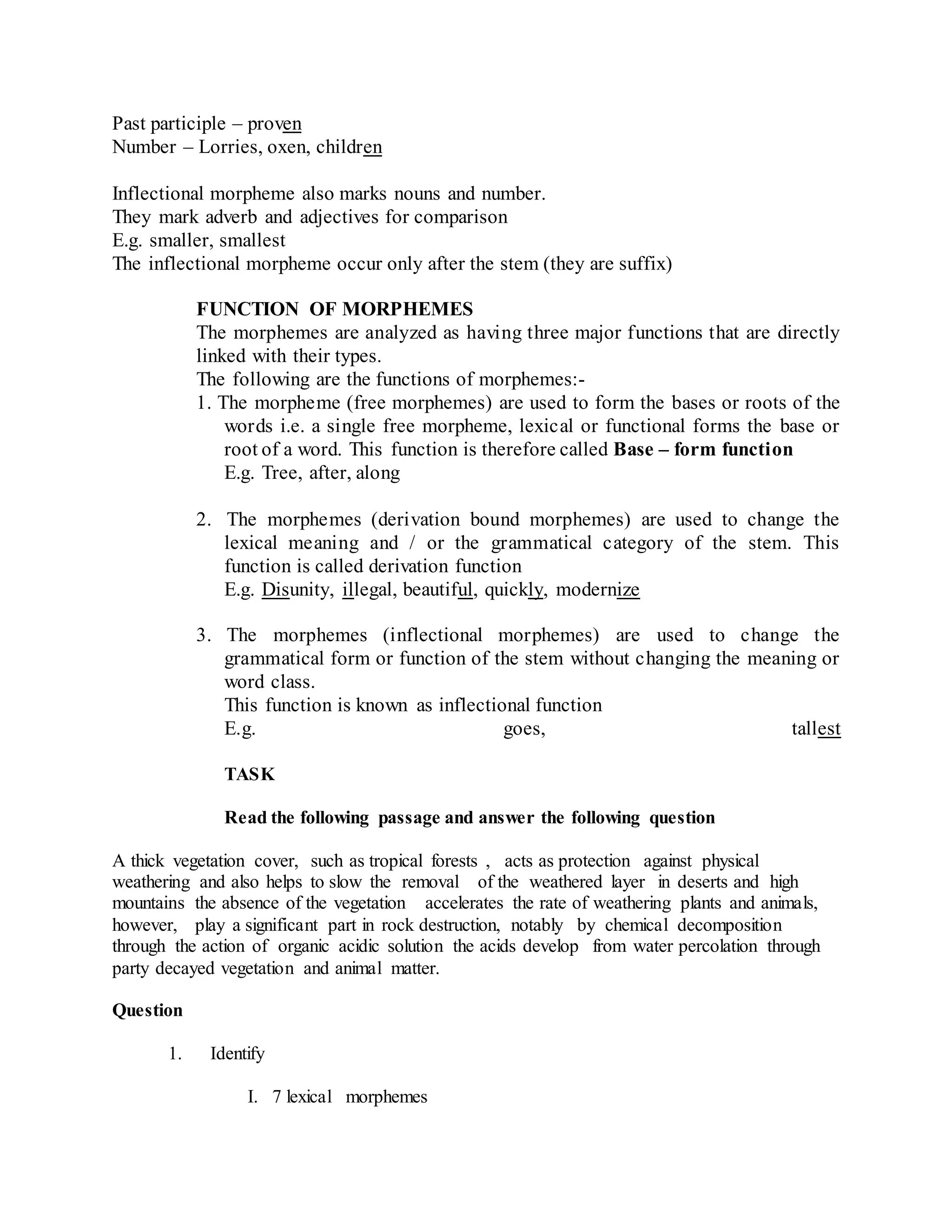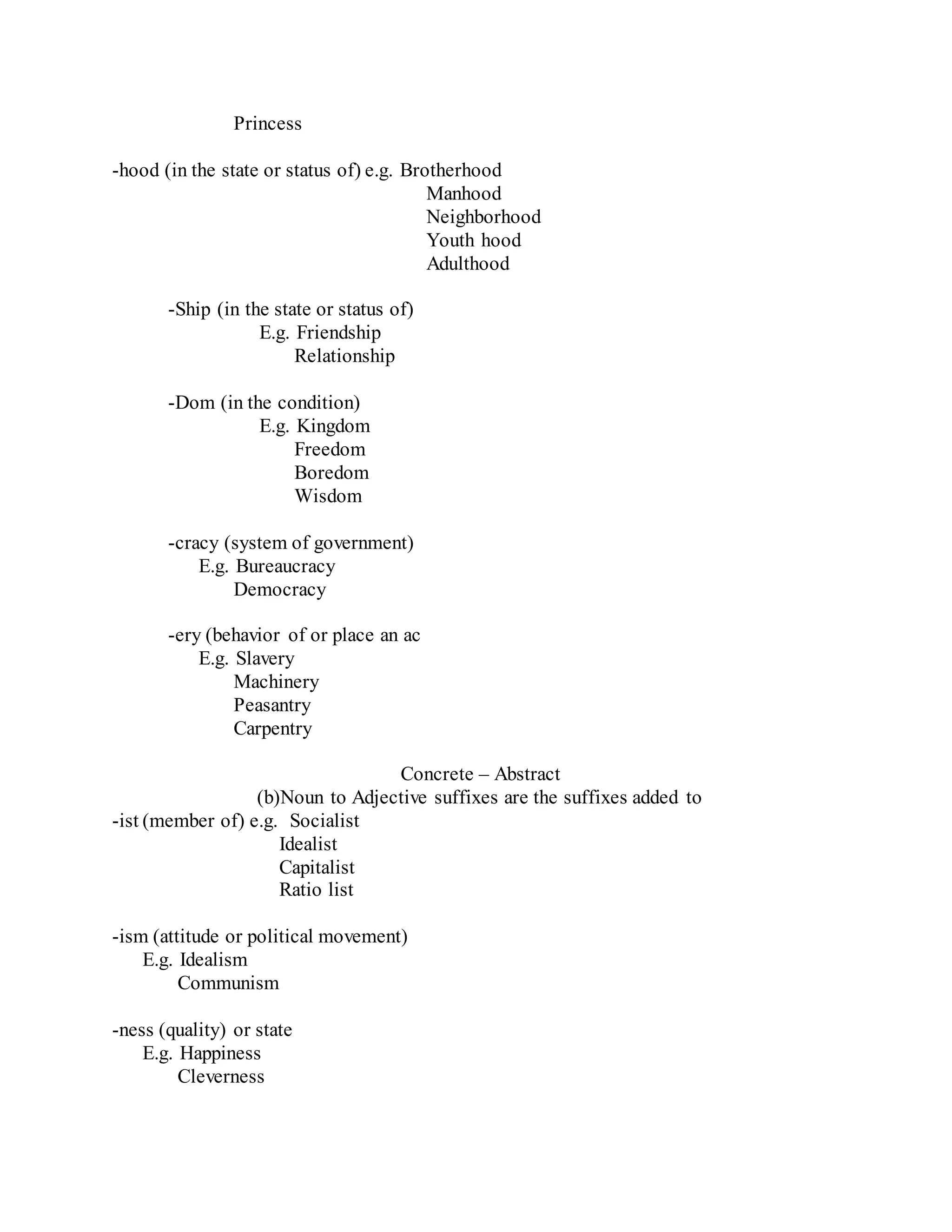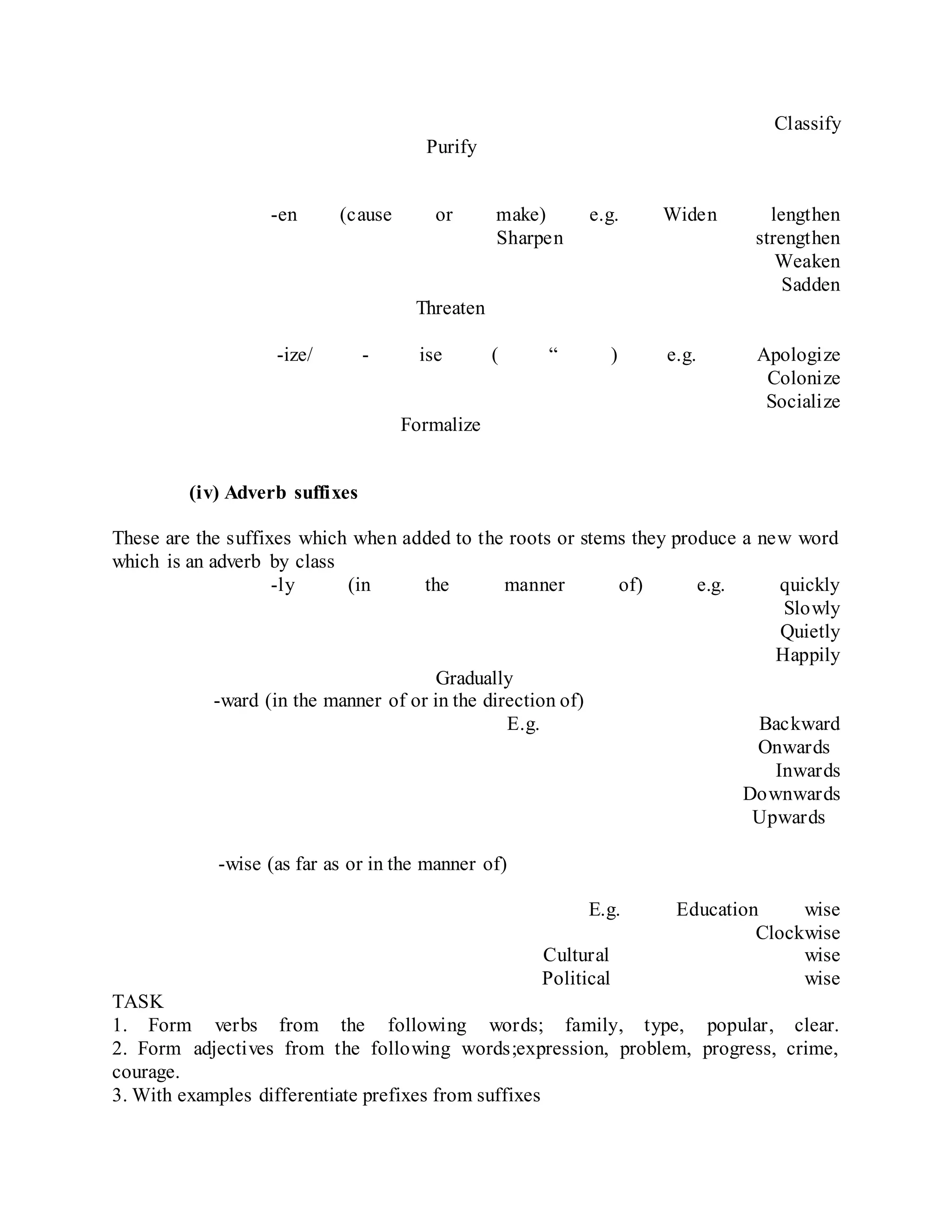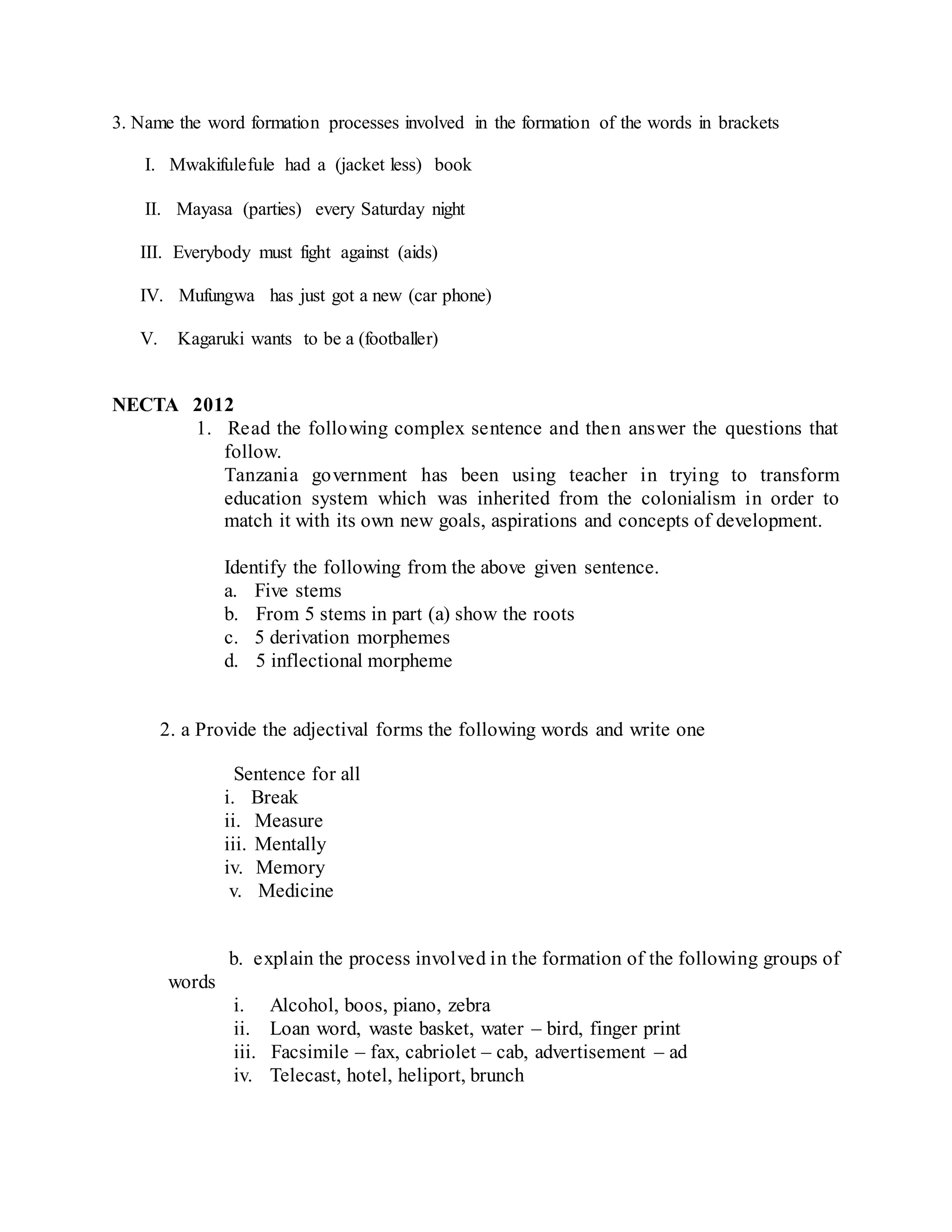This document discusses word formation and morphology. It defines key terms like morpheme, word, stem, base, root, affix, and allomorph. It explains that morphology is the study of word formation and structure, including the combination of morphemes. The main processes of word formation are affixation (prefixation and suffixation), compounding, conversion, and reduplication. Prefixes and suffixes can be used to derive new words or change the grammatical form of words. Morphemes have different types and functions in the formation and structure of words.




























